Where Can I Find Blue Cheese Near Ms
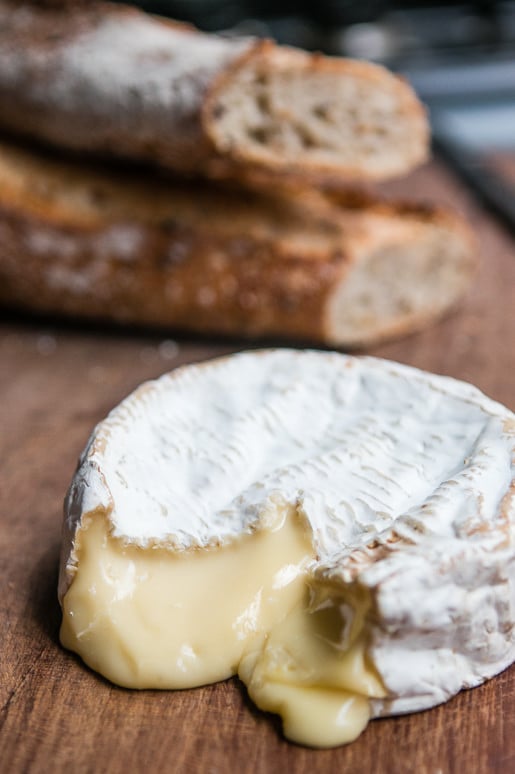
France is, of course, knowns for its spectacular cheeses. As we moved into lockdown in early spring, I asked my friend Jennifer Greco, who is an expert on French cheeses as well as being a culinary tour guide in Paris, if she'd share her ten favorite French fromages. While waiting for the country to open back up again for visitors from everywhere, I was holding on to this terrific post, where she presents her favorites top ten favorite cheeses. I know many are disappointed they can't make it back to France at this time, but when things return to normal, you might want to bookmark this post for your next visit! – David
10 Favorite French Cheeses
by Jennifer Greco
Cheese is recognized throughout the world as one of France's most prized contributions to gastronomy, and tasting exceptional French cheeses is usually high on the list for visitors. France produces somewhere between 1400 to 1600 cheeses (according to the French dairy farmers), so shopping at a fromagerie or a market means being faced with shelves and cases of all shapes and sizes of cheese. You will likely spot a few familiar names such as Swiss Gruyère, Brie de Meaux, and Roquefort, but it can be an intimidating experience.
For the last fourteen years I've been on a project to taste every cheese produced in France and am hovering around the 400 mark. I've scoured the fromageries, and the covered and outdoor markets in rural Normandy, the south of France, and in cities such as Lyon, Marseille and Paris, and have compiled a short list of French cheeses I think you should try on your visit. Choosing just ten wasn't easy because I love them all! However if I had to narrow it down, the following would make up the cheese board of my dreams…

Le Beaufort Chalet d'Alpage
Beaufort is a mammoth, 20 to 70 kilo (45-154 pound) hard, unpasteurized wheel of cheese produced in the Savoie region of the French Alps. There are three categories of Beaufort, and Beaufort Chalet d'Alpage has the strictest regulations and is the most scarce, with only about 15 producers still employing its time-honored production method.
The more common Beaufort AOC ( Appellation d'Origine Contrôlée – a strict set of regulations protecting French food and wine ) is delicious in its own right, and made in cooperative dairies between November and May from the milk of cows that graze in mountain valleys. The guidelines for wheels that carry the Chalet d'Alpage indication require that every summer the dairy cows – Abondance and Tarine breeds only – are led higher up to Alpine pastures that are over 1500 meters (almost 5,000 feet) in altitude, where they graze on lush fields of herbs and mountain flowers. The cheeses are made twice a day, starting right after the cows are milked, and only the milk collected from a single herd for 100 days of every summer, between June 15 – October 15, can be used to make Beaufort Chalet d'Alpage. Additionally, these special cheeses must be curdled and molded into alpine chalets following traditional methods, then taken down from the mountains at the end of the season, where they are put into cold aging cellars for at least five months. If deeper, more complex flavors are desired, they may be aged another year or two.
In terms of flavor, this is an elegant cheese with concentrated notes of hazelnut, warm butter, caramel, and sweet grasses. On the nose, it's both floral and fruity. Beaufort "Chalet Alpage" is not easy to find, so if you spot it at a cheese shop, I highly recommend buying a wedge.
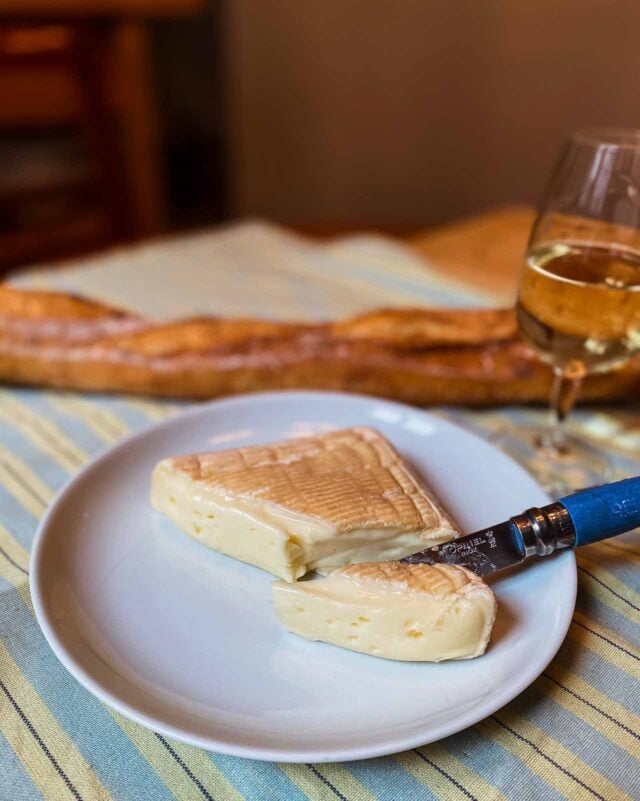
Le Carre Corse
When I'm in the mood for a strong cheese with layers of complex umami flavor and an unforgettably funky aroma, this is what I buy.
Carré Corse is a young, ewe's milk, washed rind cheese produced in the northern part of the Mediterranian island of Corsica. Washing a cheese's rind repeatedly in either beer, wine, spirits, cider, or in this case, a salt brine, is a common way to age and add flavor to the finished cheese. The washed rind cheese are often the most "fragrant" cheese, but their strong aroma can be deceptive as it doesn't necessarily mean the cheese's taste is strong. Carré Corse is an exception to that rule; it is potent on both the nose and flavor.
This cheese is rich and complex, with flavors of purple grapes, dulce de leche, and hazelnuts, and the aroma is a heady mix of yeast, sweet hay, and animals, reminiscent of standing in a barnyard. But don't let that scare you! This is truly a delicious cheese.

Le Rovethym
Every spring an abundance of young goat cheeses from all over France arrive at the fromageries. It is goat cheese season!
For a few months of every year, between November and March, when the animals are pregnant and don't naturally produce milk, many farmers stop cheese production completely to respect the breeding cycle. And while goat cheese is available and made all year long (sometimes producers will freeze cheese curds or farmers will use "tricks" such as lights that mimic the summer sun so they breed off-season), the spring, summer and early autumn months are the best time to enjoy fresh, young fromages de chèvre .
In the early 2000s, the son of a cheesemaker, Pierre Pradier, established his own farm in the Haute-Provence with a small herd of Rove goats, a breed that is native to the region and known for its distinctive twisted, lyre-shaped horns and for producing very rich, concentrated milk. In the hills of Provence, and all along the Mediterranean basin, aromatic herbs such as thyme, rosemary, lavender, and winter savory grow wild. These woody herbs, known as la garrigue , make up the spring, summer and autumn diet of the goats and sheep that graze on them.
He combined the words Rove and thyme (thym in French) to create Rovethym. It is shaped by hand into a distinctive quenelle shape that is adorned with a sprig of thyme, so very easy to spot at the fromagerie. This is a young, unpasteurized cheese, best eaten when it's just a few weeks old. It has a very dense and sticky texture with notes of citrus, thyme and other aromatic herbs. I love to eat it drizzled with honey!
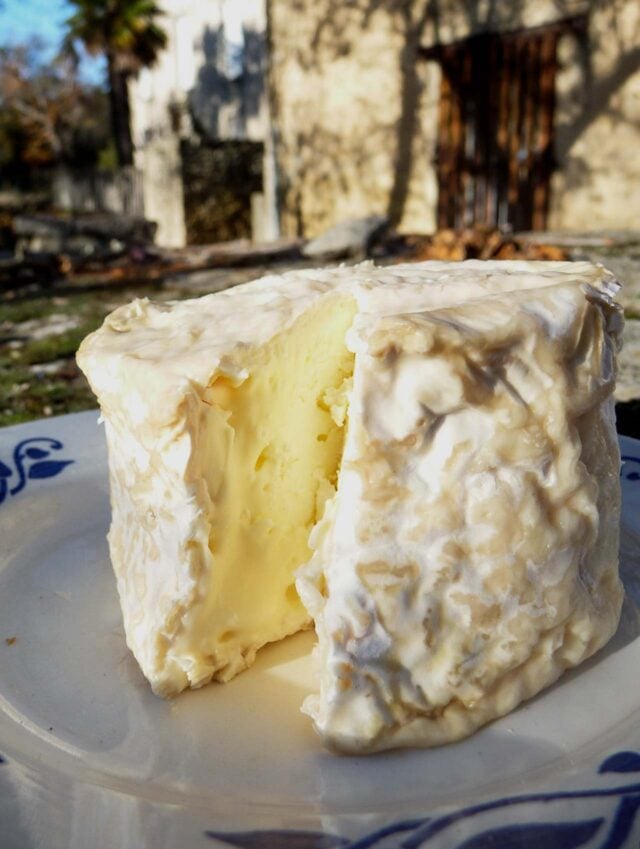
Le Cremeux du Mont Saint-Michel
La Fromagerie de Pain d'Avaine is located less than 20 miles from le Mont Saint-Michel, an enchanting island off the coast of Normandy that is crowned with a stunning medieval monastery and is a world-renowned cultural and religious site. When cheesemakers Jean-Charles and Caroline Rabache founded their cheese-making facility and created this cheese in 1998, they decided that naming it after their famous neighbor was an obvious choice.
Devoted to la vache Normande , cows known for producing top-quality milk that is exceptionally rich in protein and butterfat, and prized for cheesemaking, their cheeses are made solely from the milk and cream that arrives daily from a small-scale, neighboring farmer who raises about 50 Normandy cows.
Le Crémeux du Mont Saint-Michel is a double cream cheese, which means that full-fat cream is added to the curds during production, resulting in a cheese that is decidedly sumptuous in both texture and flavor. Chalky and tender when young, the cheese becomes runny and oh-so-buttery as it ages. There are distinct notes of mushroom, grass, and, of course – cream. As the French would say, "C'est une tuerie!" (It's to die for!)

La Fleur du Maquis
Don't be intimidated by this herb encrusted, sometimes mold-dusted, cheese. La Fleur du Maquis is not strong. It is sweet, delightfully rich, and the herbs and fluffy layer of mold mean only one thing – flavor!
Also known as le Brin d'Amour (a twig or sprig of love), this is an unpasteurized ewe's milk cheese that has been produced on Corsica since the 1950s. The prickly looking rind is made up of le maquis , an aromatic mix of native herbs, such as thyme, rosemary, mint, oregano and marjoram, that grow wild on the island. The individual fresh cheeses are hand-coated with the dried herbs, sometimes topped with juniper berries and small chilies, and left to ripen in humid cellars for at least two weeks, or up to several months.
The rind has distinct notes of nuts, crème fraîche, and, not surprisingly, fragrant herbs, which are soft and perfectly edible. The snowy white center of the cheese is well balanced with flavors of tangy buttermilk and mild honey. I sometimes have to convince people to try this cheese, and when they do, it often becomes their favorite on the cheeseboard.

Le Soumaintrain
This cheese is a flavor bomb! Soumaintrain is a cow's milk, washed rind cheese produced on the Champagne/Bourgogne border, and you might be familiar with its cousin, Époisses. As previously mentioned, washed-rind cheeses usually emit powerful aromas, but their flavors can be soft and mild. Soumaintrain's rind is washed for several weeks in a combination of brine and Marc de Bourgogne, a French eau-de-vie made in Burgundy, similar to grappa. This repeated washing attracts good bacteria to the cheese's rind, which adds to its flavor and gives it a distinctive smell.
Its texture is soft and smooth, and it is often sold in a wooden box to protect its fragile, thin rind. A young Soumaintrain will be firm in the center, with acidic and lactic flavors, while a five to six-week-old Soumaintrain, at its peak ripeness, will be oozing and creamy under the rind and have a much richer, nutty, almost meaty flavor. On the nose it is earthy and it often reminds me of hickory-smoked bacon.

La Taupiniere
La Taupinière, (molehill in French), was created by farmer Gilles Jousseaume in 1973 on his farm in the Poitou-Charentes region of western France. The small, family-owned operation believes in respecting their products, "from start to finish." They grow all the grain the goats eat, which supplements their diet of fresh grass, resulting in a cheese that has a consistent quality and an intense, deep flavor.
A natural, blue-grey mold dots the thin, ash-covered rind of this dome-shaped, unpasteurized goat's cheese. The center is snowy white and its texture can range from soft and fluffy when it is young, to dense and creamy as it ages. La Taupinière's flavor is concentrated and tangy, with fresh milk and hazelnut notes, and mushroomy, lactic aromas. They also make a smaller version called la Taupinette.
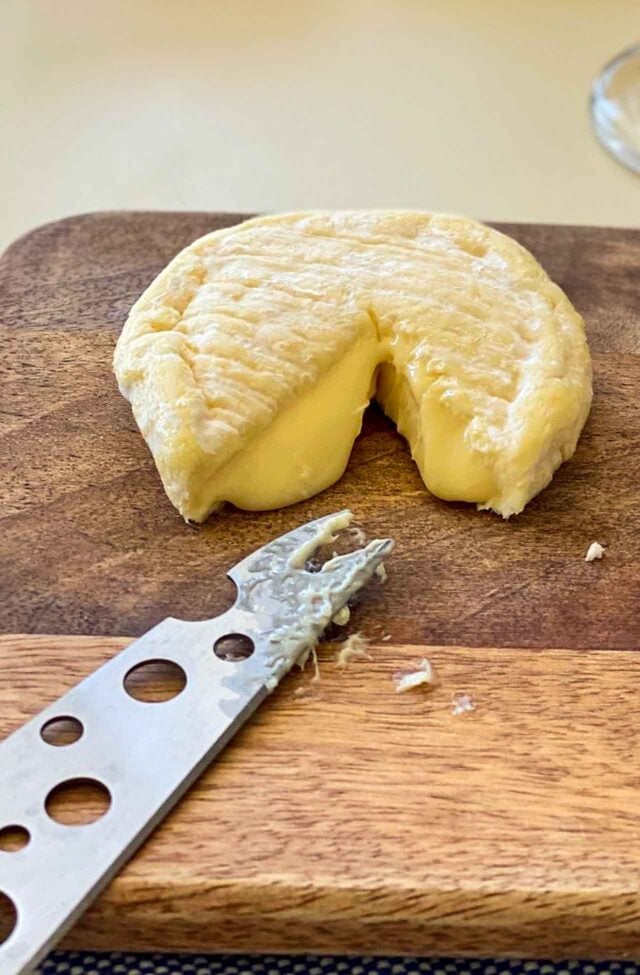
Le Saint-Marcellin
Saint-Marcellin can be enjoyed in various stages of affinage (ageing): At two or three weeks old it is still firm and sliceable, but at five or six weeks, it becomes delightfully oozy and often sold in small earthenware crocks to keep the runny center from bursting through its thin rind, which is just how I like it.
The flavor of this cheese develops as it ages. A young Saint-Marcellin will have notes of citrus, salt and grass, and an aged version will be more barnyard-y, nutty and yeasty. It is produced from both pasteurized and unpasteurized cow's milk (the unpasteurized is better in terms of texture and flavor) in the Rhône-Alps region and my all-time favorite producer is Mère Richard for their cheese's well-balanced flavor and meltingly soft texture.
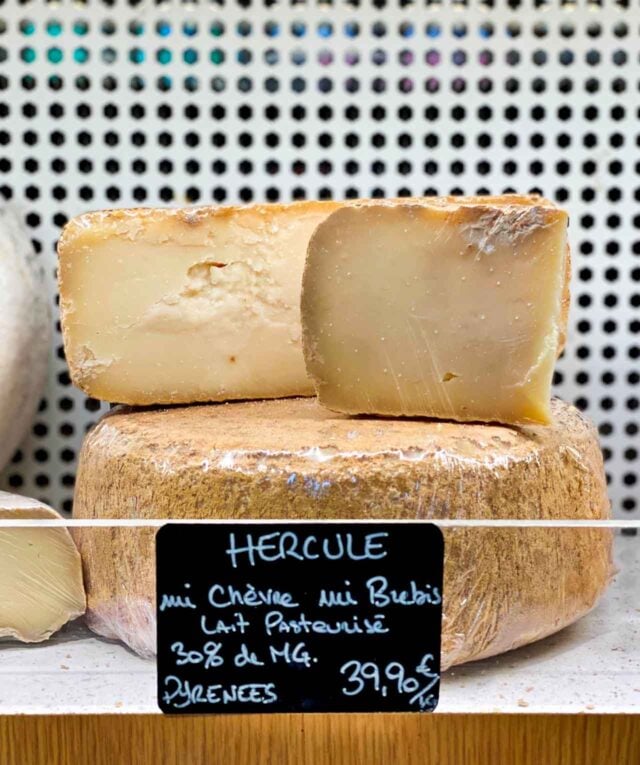
Hercule
This hard cheese takes the nutty flavor of ewe's milk and combines it with the tangy acidity of goat's milk, resulting in a fromage that is buttery and rich, with an agreeable hint of sweetness on the finish. It is aged between nine to twelve months, and with such perfectly balanced flavor and caramel richness, it's easy to understand why this one is a crowd-pleaser.
It is produced by Dominique Bouchait, who is a Meilleur Ouvrier de France (an official designation, and honor, that denotes someone who is considered a "best craftsperson" in France) in cheese. Hércule, and a small range of other ewe's milk cheeses, are fabricated at his fromagerie in the Pyrénées, Les Fromagers du Mont-Royal .
I highly recommend M. Bouchait's beautifully photographed and informative book about cheese, Fromages: An Expert's Guide to French Cheese , which was translated from French to English last year.
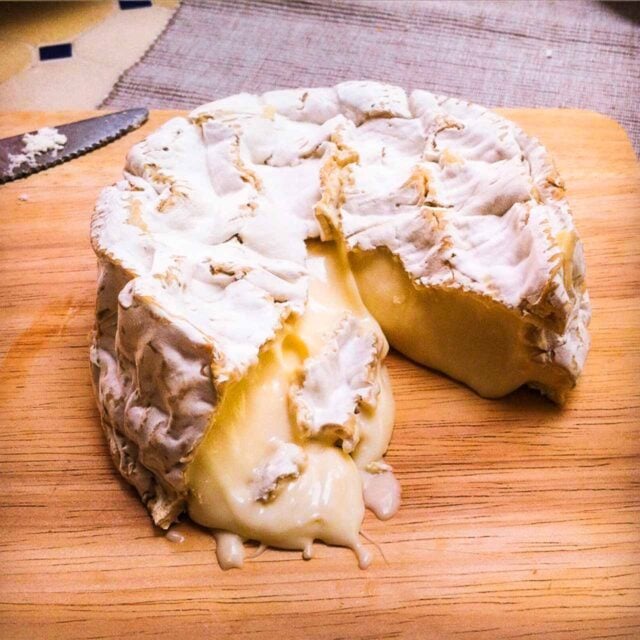
Le Camembert de Normandie
A cheese simply labeled Camembert can easily be mistaken for the genuine French fromage, which is actually called Camembert de Normandie .
A true Camembert de Normandie is au lait cru (made from unpasteurized milk), hails from the Normandy region, and tastes slightly salty, grassy, earthy and fruity. It has a fluffy, mold-covered rind with heady aromas of butter, cruciferous vegetables and mushrooms, whose interior is creamy and pale yellow. It is not the rubbery textured, pasteurized, bland cheese that is often found for sale around the world. Once you've come to France and tasted the real deal, you'll never look at a pasteurized, industrial camembert the same way.
The people of Normandy have a wonderful nickname for their beloved cheese; they refer to it as les pieds de dieu or "the feet of god." It stands to reason.
Jennifer Greco is a life-long Francophile and French food and wine enthusiast, with an unabashed passion for cheese. After moving to the south of France almost two decades ago, she has steadily been tasting her way through each and every cheese produced in France, a project that started one day on a whim and that has developed into a full-fledged infatuation. To date, she has tasted just under 400 of the approximately 1500 cheeses in France.
Jennifer is now based in Paris where she leads gourmet food and wine tours, and guides fellow fromage lovers during small group tastings both privately, which can be booked through her website, and with Paris by Mouth . In her spare time, she writes about regional French cheeses on her blog, Chez Loulou , and for a handful of publications, while studying to earn a French Wine Scholar certificate.
Text and photos in this post by Jennifer Greco. (Except for the photo at the top of the post.) You can stay in touch with Jennifer by following her on Facebook, Pinterest, and Instagram.
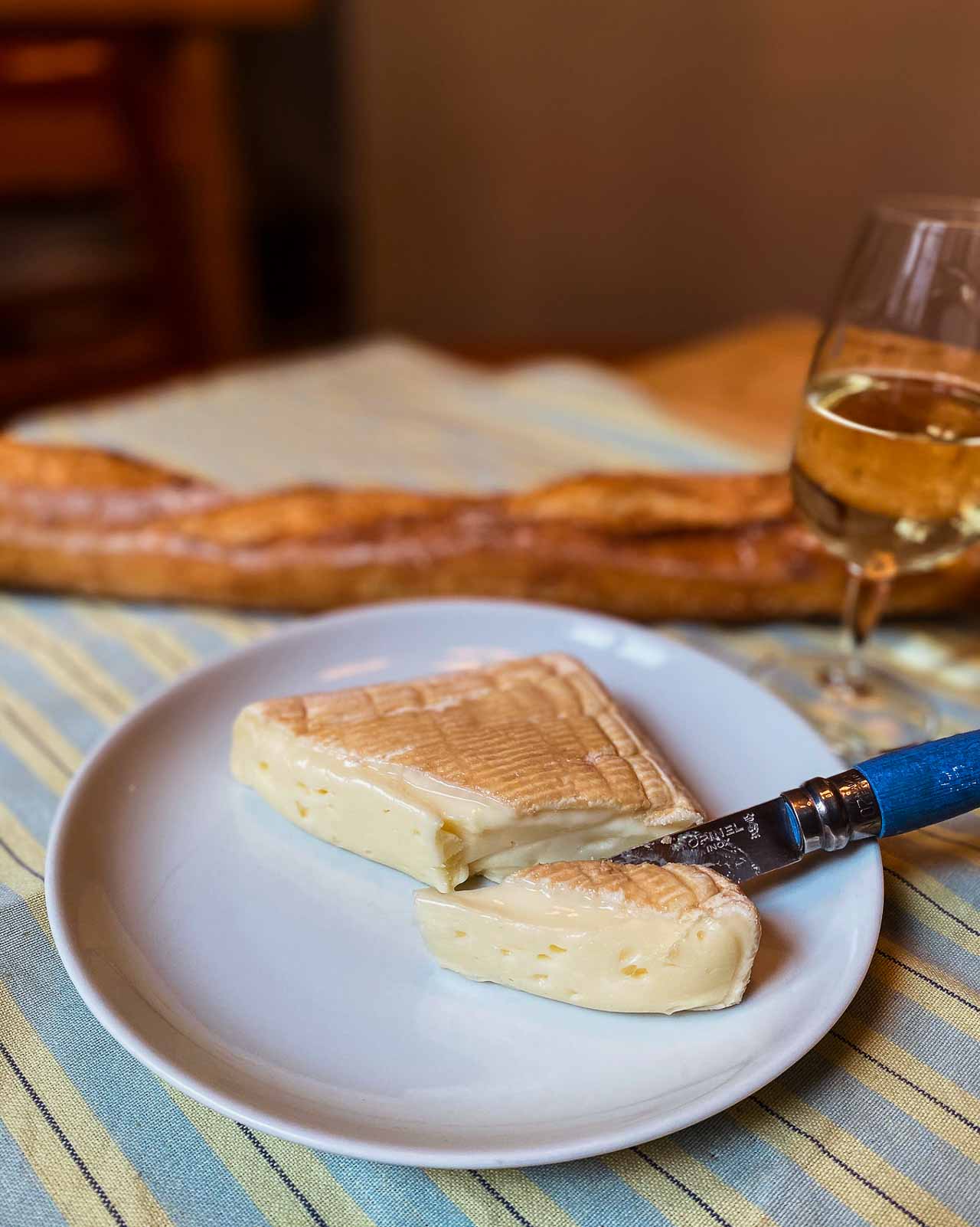
Where Can I Find Blue Cheese Near Ms
Source: https://www.davidlebovitz.com/10-favorite-french-cheeses/